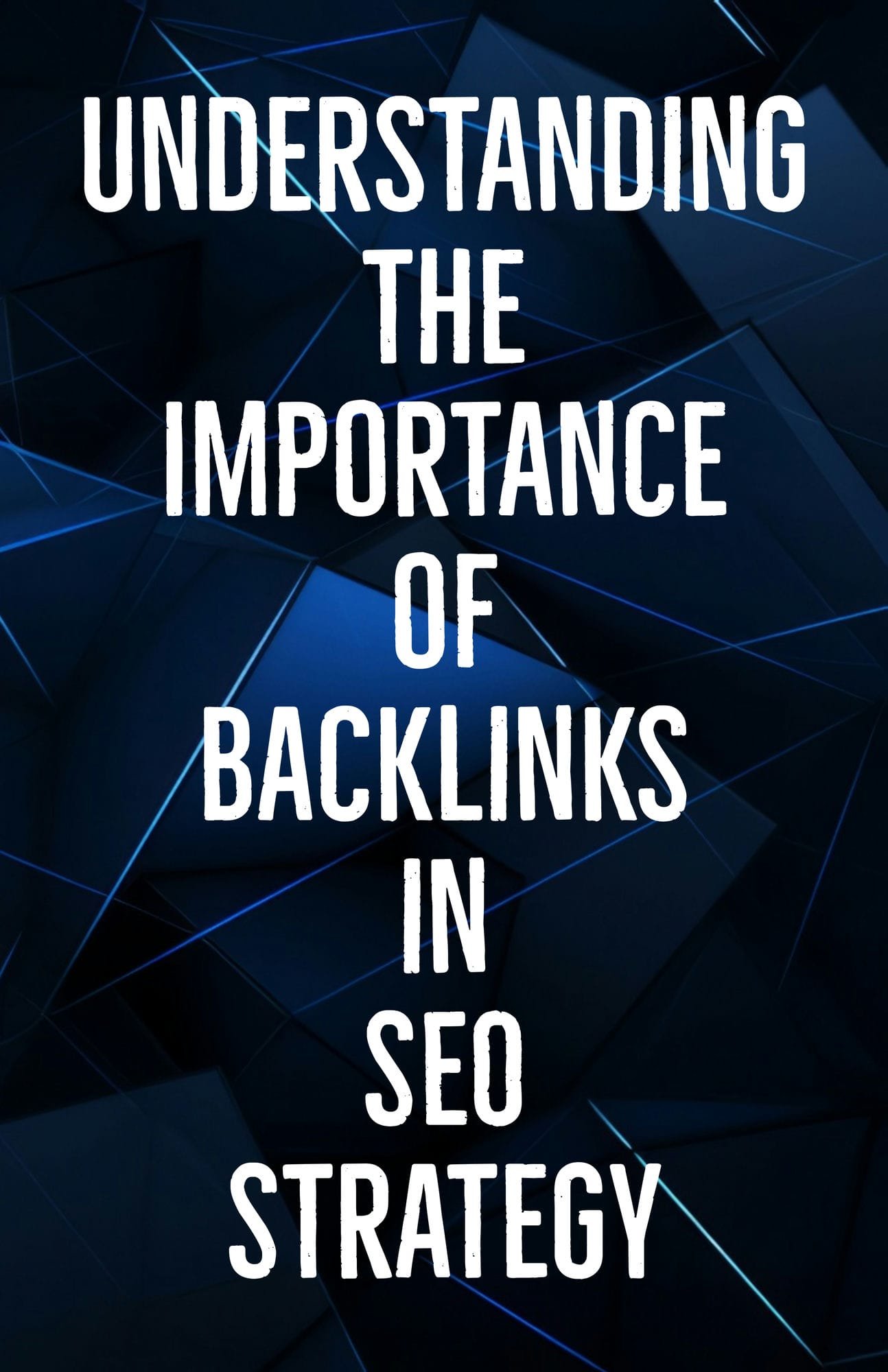
Hey there, fellow marketing enthusiast! Ever heard the term “backlinks” tossed around in SEO conversations and found yourself scratching your head? You’re not alone. These mysterious little links are like the secret sauce in a recipe for online success, but understanding them can feel like trying to learn a new language.
Backlinks, also known as inbound links, are links from one website to a page on another website. Sounds simple, right? But don’t let the basic concept fool you. They play a crucial role in SEO, and understanding how they work could be the game-changer your website needs.
In this post, we’ll break down the importance of backlinks, how they affect your site’s ranking, and some handy tips for acquiring quality ones. Whether you’re new to SEO or looking to up your game, we’ll help you navigate the world of backlinks without needing a cryptographer’s manual. Buckle up, and let’s dive in!
What Are Backlinks, Anyway? – A Simple Explanation
Backlinks, often referred to as “inbound links” or “incoming links,” are links from one website to a page on another website. Think of them as the streets between the pages of the Internet, creating connections and directing traffic.
Here’s a basic analogy: Imagine your website as a house in a bustling city. The more roads (backlinks) that lead to your house, the more accessible it becomes to visitors. In the digital world, these “roads” translate into a higher visibility on search engines like Google.
Search engines interpret backlinks as a sign of credibility and relevance. If reputable websites are linking to your content, it signals to search engines that your page contains valuable information. Consequently, your website is more likely to rank higher in search results for relevant queries.
But it’s not just about having any backlink; the quality and context matter. A link from a well-established, authoritative website in your field is far more valuable than numerous links from irrelevant or sketchy sources.
Understanding the importance of backlinks is the foundation for any successful SEO strategy. It’s a complex subject, but it doesn’t have to be confusing. In the following sections, we’ll explore how backlinks connect to SEO, how to evaluate good backlinks, and practical strategies for building them effectively.
How to Evaluate the Quality of Backlinks – Criteria and Tools
Not all backlinks are created equal, and understanding what makes a good backlink is essential for building an effective SEO strategy. A high-quality backlink can significantly boost your rankings, while a poor-quality link might do more harm than good. Here’s what you need to know to evaluate the quality of backlinks:
- Source Relevance: A good backlink comes from a website that is relevant to your industry or niche. For example, if you’re in the health and wellness field, a link from a well-known health magazine is far more valuable than one from a tech blog.
- Domain Authority: Consider the authority of the linking domain. High-authority domains like well-known media sites or educational institutions often carry more weight in search algorithms.
- Link Position: Where the link is positioned on the page matters too. A backlink within the main content of a page is generally more valuable than a link in the footer or sidebar.
- Anchor Text: The clickable text used in the backlink, known as anchor text, should be relevant to the content it’s linking to. Using keyword-rich and descriptive anchor text can enhance the link’s effectiveness.
- Follow vs. No-Follow: While “follow” links pass on SEO value, “no-follow” links tell search engines not to consider them in their ranking algorithm. Both types have their roles, but “follow” links are generally more beneficial for SEO.
- Linking Page Content Quality: Evaluate the quality of the content on the linking page. Is it well-written, informative, and relevant to your linked content? Quality content often translates into a quality backlink.
- Use of Tools: Utilizing SEO tools like Moz, Ahrefs, or SEMrush can provide insights into backlink quality, helping you analyze and monitor your backlink profile with ease.
It’s important to be mindful of these factors as you seek to gain new backlinks and analyze existing ones. Remember, quality always trumps quantity, and a handful of well-targeted, high-quality backlinks can make a more meaningful impact on your rankings than a large number of low-quality ones. In the next section, we’ll dive into practical strategies to create and acquire quality backlinks for your website.
Building High-Quality Backlinks: Strategies and Best Practices
Creating and acquiring high-quality backlinks is a central aspect of SEO that requires a well-thought-out strategy. It’s not just about getting any link but getting the right ones that align with your brand and objectives. Here are some proven strategies and best practices to help you build high-quality backlinks:
- Content Creation and Outreach: Crafting valuable, unique, and engaging content is one of the best ways to attract quality backlinks. Once you have excellent content, outreach to industry influencers, bloggers, or websites that might be interested in linking to your content. A personalized approach often yields better results.
- Guest Blogging: Writing guest posts for relevant websites in your industry is another effective way to build quality backlinks. Ensure that the sites you choose for guest blogging have a good reputation and align with your target audience.
- Utilize Social Media: Sharing your content on social media platforms can attract attention and encourage others to link to your work. Engage with your audience and industry influencers to foster relationships that may lead to backlink opportunities.
- Collaborate with Industry Partners: Partnering with related businesses, suppliers, or industry peers for collaborations can lead to reciprocal linking. Such relationships foster trust and often result in valuable backlinks.
- Local Directory Listings: For businesses with a local focus, getting listed in reputable local directories can provide authoritative backlinks that are relevant to your community.
- Creating Infographics or Visual Assets: Visual content like infographics can be powerful link magnets. If well-designed and informative, they can be shared widely, resulting in multiple backlinks.
- Build Relationships with Journalists and Bloggers: Establishing relationships with journalists and bloggers in your field can lead to media coverage and valuable backlinks. Provide them with insights, quotes, or expert opinions that they can use in their content.
- Analyze Competitors’ Backlinks: Tools like Ahrefs or SEMrush can help you analyze your competitors’ backlink profiles. Identifying where they are getting links from can inspire new ideas for your own backlink strategy.
- Avoid Black Hat Techniques: It’s vital to steer clear of any techniques that violate search engine guidelines, such as purchasing links. These can lead to penalties and negatively impact your rankings.
The process of building high-quality backlinks takes time, effort, and persistence. Stay focused on providing value and aligning with reputable sources that resonate with your brand and target audience. By implementing these strategies and adhering to best practices, you can enhance your backlink profile and bolster your SEO performance. In the next section, we’ll explore ways to monitor and maintain your backlink profile over time.
Monitoring and Maintaining Your Backlink Profile: Tools and Techniques
Your backlink profile is a dynamic entity that needs constant monitoring and maintenance to ensure its continued effectiveness in your SEO strategy. Managing the backlinks you’ve worked hard to obtain involves understanding their impact, identifying any potential issues, and making necessary adjustments. Here’s how to monitor and maintain your backlink profile:
- Use Backlink Analysis Tools: Leveraging tools like Moz, Ahrefs, or Google Search Console can provide insightful data about your backlinks, including their quality, source, anchor text, and more. Regularly reviewing this information helps you keep track of what’s working and what isn’t.
- Identify and Remove Low-Quality Links: Not all backlinks are created equal, and low-quality or spammy links can actually harm your SEO efforts. Periodically assess your backlink profile for any suspicious or low-quality links, and take action to disavow or remove them.
- Track Your Competitors: Monitoring your competitors’ backlink strategies can provide valuable insights into industry trends and uncover opportunities you may have missed. Compare your backlink profile with competitors to identify areas for improvement or differentiation.
- Monitor Referral Traffic: Using analytics tools like Google Analytics allows you to see how much traffic is coming to your site through backlinks. Understanding which backlinks are driving valuable traffic helps you recognize and prioritize high-performing sources.
- Regularly Update and Refresh Content: Your backlinked content must remain relevant and up-to-date to continue attracting links. Regularly review and update your content to ensure it remains valuable and aligned with current industry trends and standards.
- Engage with Your Community: Building and maintaining relationships with those linking to your content can foster long-term collaboration and loyalty. Engage with them through comments, social media, or even personal outreach to thank them for the link or offer additional collaboration opportunities.
- Create a Backlink Maintenance Schedule: Consistency is key in backlink management. Establish a routine for regularly reviewing, analyzing, and maintaining your backlink profile. This systematic approach ensures that nothing falls through the cracks and your backlink strategy continues to support your SEO goals.
- Evaluate the Impact on Rankings: Monitoring how your backlinks influence your search engine rankings helps you understand their effectiveness. If certain links or strategies aren’t impacting your rankings positively, it may be time to reassess and adjust your approach.
By actively monitoring and maintaining your backlink profile, you ensure that your efforts remain aligned with your overall SEO strategy. Being proactive about managing your links helps you avoid potential pitfalls and keeps your backlink profile healthy and effective. The next section will delve into common challenges and how to overcome them, ensuring your backlink strategy remains robust and resilient.
Common Challenges in Building Backlinks and How to Overcome Them
Building and maintaining a strong backlink profile is not without its challenges. The process requires strategic planning, continuous effort, and an understanding of the obstacles that may arise. Here’s a look at some common challenges you might face in building backlinks, along with actionable solutions to overcome them:
- Difficulty in Acquiring High-Quality Links: High-quality backlinks are often harder to obtain but yield more value. To overcome this challenge, focus on creating exceptional content that appeals to authoritative websites in your industry. Building relationships with industry leaders can also help in obtaining valuable links.
- Unwanted or Spammy Links: Sometimes, your site may attract links from low-quality or irrelevant sources. Regularly monitor your backlink profile and use Google’s disavow tool to remove any unwanted links that could negatively impact your SEO.
- Time-Consuming Process: Building a solid backlink profile takes time and persistence. Using tools to automate the tracking and analysis of backlinks can save you time. Also, consider collaborating with reputable industry bloggers, influencers, or websites to expedite the process.
- Competitive Niches: In highly competitive markets, standing out can be a significant challenge. Focus on discovering untapped opportunities, such as niche-specific forums, communities, or lesser-known platforms where your competitors may not be as active.
- Changes in Search Engine Algorithms: Search engines continually update their algorithms, which may affect the value or impact of certain backlinks. Staying abreast of SEO industry news and adapting your strategy accordingly helps in mitigating this challenge.
- Content that Fails to Attract Links: If your content is not attracting the backlinks you anticipated, it may be time to reassess its quality, relevance, or uniqueness. Conduct surveys or ask for feedback from your audience to understand what resonates with them.
- Managing Link Decay: Over time, some backlinks may become inactive or lose value. Regularly auditing your backlink profile and updating or replacing decayed links ensures that your backlink profile remains strong.
By recognizing and understanding these common challenges, you can equip yourself with the strategies needed to navigate them effectively. Whether you’re dealing with issues related to quality, time, competition, or compliance, adopting a proactive and informed approach helps you build and maintain a robust backlink profile that supports your SEO goals. In the next section, we will explore innovative strategies and emerging trends in backlinking to keep your approach fresh and competitive.
Innovative Strategies and Emerging Trends in Backlinking – Staying Ahead of the Curve
The world of backlinks is ever-changing and dynamic. Embracing innovation and staying informed about emerging trends is vital to maintaining a competitive edge. Here’s a look at some innovative strategies and trends that may shape the future of backlinking:
- Voice Search Optimization: With the rise of voice assistants, optimizing for voice search can create new opportunities for backlinks. Consider how people speak rather than type and tailor your content to answer those verbal queries.
- AI and Machine Learning: Tools employing artificial intelligence and machine learning are making backlink analysis and targeting more precise and efficient. Leveraging these technologies can help streamline your backlink strategy.
- Content Collaboration and Webinars: Collaborating on content creation or hosting webinars with industry experts can create unique link-building opportunities. Such partnerships foster community engagement and enhance credibility.
- Personalization and User Experience (UX): Creating personalized content experiences can lead to more engagement and potential backlink opportunities. Ensuring a smooth UX also makes your site more link-worthy.
- Emphasis on Video Content: Video content is increasingly popular, and creating shareable video content can attract a broader audience and new linking possibilities.
Conclusion
Backlinks, those seemingly simple connections between web pages, carry profound significance in the SEO landscape. But as we’ve unraveled in this comprehensive post, they are far from simple in their nature and application.
Understanding, building, and maintaining a robust backlink profile is an art form that requires a strategic mindset, continuous effort, and adaptability to the ever-changing digital world. From evaluating the quality of backlinks to overcoming challenges, innovating, and embracing emerging trends, a successful backlink strategy demands a multifaceted approach.
As you forge your path through the interconnected world of the Internet, remember that the quality and context of your backlinks are paramount. Aim for relevance, authenticity, and value, and you’ll create not just links but meaningful connections that resonate with your audience.
Whether you’re a newcomer to SEO or a seasoned veteran, we hope this post has shed light on the fascinating world of backlinks and equipped you with the knowledge and tools to navigate it with confidence. So grab your digital compass, set your course, and embark on your backlinking adventure. The digital world awaits, and success is just a quality link away!
Happy backlinking, fellow marketing enthusiast!





